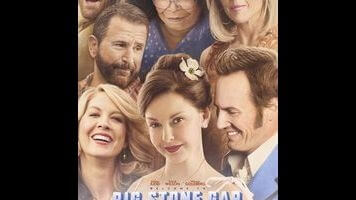The cornball Big Stone Gap should have stayed on the page

Every novelist must dream of having some say in how their work is adapted. But beyond the occasional case of handling screenwriting duties themselves—or the much less common case of being a writer with the clout of, say, J.K. Rowling—most of them relinquish control once the process of making their book into a movie begins. Not Adriana Trigiani, though. The author didn’t just pen the adaptation of Big Stone Gap, the first in a series of hit novels she wrote about her hometown in Virginia. She also directed the film, and shot it entirely on location in the real Big Stone Gap. The result is at once labor of love and cautionary tale: Apparently too close to the story to recognize how ill suited she was to translating its charms to the screen, Trigiani has emerged with nothing but corny, stilted Americana, like something Garrison Keillor might burp out on a really off day.
Set in 1978, in the titular Appalachian coal-mining community, the film centers on self-proclaimed “old maid” Ave Maria Mulligan (Ashley Judd), who at 40—five years older than she was in the novel—is close to resigning herself to the role of town spinster. Ave Maria (yes, like the song and prayer) has a kind of platonic life partner, her best friend and community-theater colleague Theodore (John Benjamin Hickey), but she’d be barking up the wrong tree, so to speak, to expect romance from him. Mostly, she keeps busy running the local pharmacy, directing small-scale stage productions, and making eyes with Jack (Patrick Wilson), the hunky miner she’s known since high school. One fateful day, however, Ave Maria’s uneventful life is turned upside down by a shocking revelation about her lineage—one that leads to both a property dispute with greedy relatives and the possibility of a cross-continental adventure.
Big Stone Gap has been described, in so many words, as a book best enjoyed from the comfort of a hammock, a glass of lemonade within reach and a trusty hound underfoot. But whatever folksy pleasures readers got out of Trigiani’s valentine to her birthplace must have been inextricable from her prose. On screen, the regional color for which this story has been celebrated looks indistinguishable from any generically nostalgic portrait of dusty gravel roads, quaint storefronts, and inviting porches. Surely, the novel’s supporting cast of eccentric locals possessed greater dimension than the quirky caricatures offered by the likes of Whoopi Goldberg, Jenna Elfman, and Jane Krakowski, the latter not far from Rural Juror territory. There’s virtue in making heartfelt, old-fashioned movies about the kind of people and places Hollywood normally ignores, but only if said people and places aren’t flattened into homespun cliché.
Stranded in this tidy cornpone soap, Judd acquits herself nicely, finding real pain and desire beneath a mountain of platitudes. Her scenes with Wilson—an honorary BSG resident, as his father was born in the town—are easily the film’s best; for a few lovely moments, we might be watching a modern-dress classic, Jane Austen relocated to coal country. Otherwise, it’s as though Trigiani is so familiar with her setting and characters that she’s forgotten to sell audiences on what makes them special. The author, who’s helmed a two-decade-old documentary and nothing else, would have been better off passing directorial duties to a filmmaker with some distance from the material—or at least one possessed of a little more confidence and panache behind the camera. (Too many scenes find actors staggering into frame, waiting to deliver their lines.) No amount of emphatic fiddle and banjo can communicate the specific appeal of Big Stone Gap. Trigiani aims for affectionate blue-collar tribute, hits Pepperidge Farm commercial instead.